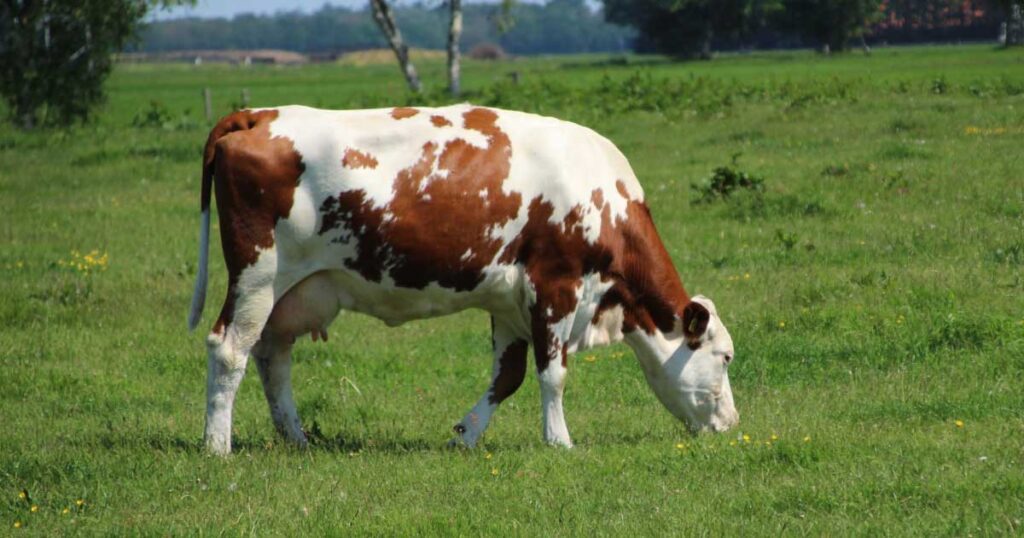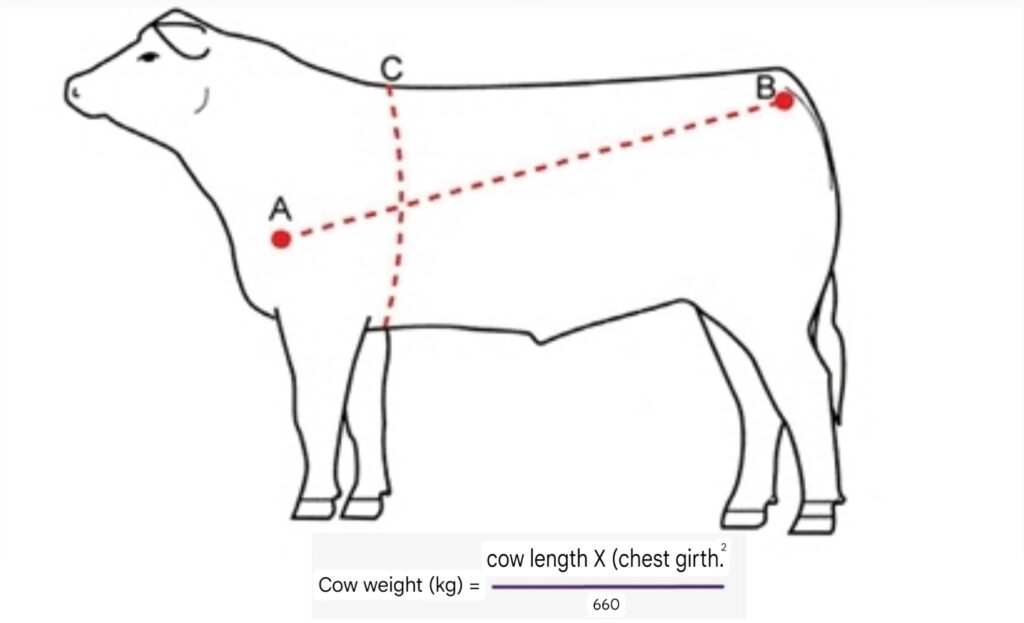Raising cows can be a rewarding endeavor, whether you’re interested in dairy production, beef cattle, or simply keeping them as pets. Which plays an important role in the agricultural economy. This guide will provide you with essential information on how to successfully raise cows, covering everything from breed selection to health care.

Understanding the Basics
Before diving into the specifics of raising cows, it is crucial to understand their basic needs and behaviors. Cows are social animals that prosper in herds. They require ample space, proper nutrition, and regular veterinary care.
Importance of Cow Husbandry
Cow husbandry is not only for milk production, but is a fundamental part of agricultural management. The nutritional value and economic value of cow milk is an important source of income for farmers.
Economic Importance
Cow farming is an important source of income for farmers. By selling milk, farmers can support their families financially.
Nutritional Importance
Cow milk is essential for human nutrition. It contains protein, calcium, vitamins and other nutrients.
Before starting cow rearing some preparations have to be done.
Site Selection
It is very important to select a proper site for the cow. The site should be clean, ventilated, and have access to sunlight.
Food and Nutrition
Ensuring proper food and nutrition for the cow is essential. The cow’s diet should include grass, hay, corn, and other nutritious ingredients.
Key Considerations
- Space Requirements: Each cow needs at least 1.5 to 2 acres of pasture.
- Social Structure: Cows are herd animals; it’s best to keep at least two together.
- Behavior: Understanding cow behavior will help in managing them effectively.
Choosing the Right Breed
Selecting the right breed is vital for your goals, whether they are for milk production, meat, or companionship.
Popular Breeds
- Dairy Breeds: Holstein, Jersey, Guernsey
- Beef Breeds: Angus, Hereford, Charolais
- Dual-purpose Breeds: Milking Shorthorn, Simmental
Factors to Consider
- Climate: Choose breeds that can thrive in your local climate.
- Purpose: Determine whether you need a breed for milk, meat, or both.
Essential Infrastructure
Creating a suitable environment for your raising cows is essential for their well-being.
Required Facilities
- Barns and Shelters: Protect cows from extreme weather.
- Fencing: Strong fencing is necessary to keep cows contained.
- Water Supply: Ensure a continuous supply of clean water.
Pasture Management
- Rotation: Rotate grazing areas to prevent overgrazing and promote healthy pastures.
- Supplemental Feeding: Provide hay or grain during winter months or droughts.
Feeding Your Cows
Proper nutrition is crucial for the health and productivity of your cows.
Nutritional Needs
- Forage: Grass and hay should be the primary diet.
- Concentrates: Grains and protein supplements can be added for energy.
- Minerals and Vitamins: Ensure cows receive essential minerals like calcium and phosphorus.
Feeding Schedule
- Consistency: Feed cows at the same time each day.
- Monitor Body Condition: Adjust feed based on the cows’ condition and stage of lactation or growth.
Health Care and Management
Regular health care is vital to prevent diseases and ensure the longevity of your herd.
Veterinary Care
- Routine Check-ups: Schedule regular veterinary visits for vaccinations and health assessments.
- Parasite Control: Implement a parasite management program.
Signs of Illness
- Behavior Changes: Lethargy or isolation from the herd can indicate illness.
- Physical Symptoms: Monitor for signs such as coughing, limping, or changes in appetite.
Breeding Practices
If you plan to breed your cows, understanding the basics of cattle reproduction is essential.
Breeding Methods
- Natural Breeding: Involves allowing a bull to mate with cows.
- Artificial Insemination: A more controlled method that can improve genetics.
Gestation and Calving
- Gestation Period: Cows are pregnant for about nine months.
- Calving Preparation: Prepare a clean, safe area for calving to reduce stress.
Characteristics of productive cows
Specially productive cows are observed in some regions of Bangladesh. For example: Chittagong red cows, raising cows of Pabna district and cows of Faridpur district.
- Head: The head will be light and small in size. The forehead will be wide, the eyes will be bright. They will be interested in consuming more food.
- Body shape: The front of the body will be light, the back will be heavy and well-structured, other organs will be balanced and well-organized. The body shape will be attractive. The body structure will be loose.
- Ribs: The rib bones can be clearly felt. The bone structure will be balanced.
- Skin: The skin will be thin. There will be no excess fat under the skin. The hair will be smooth and shiny.
- Ulan: In the case of cows, the ulan will be large and well-structured and in line with the body. The space between the two hind legs will be wide. The udders will be of the same size. The 4 udders will be equidistant and parallel.
- Milk veins: The milk veins will be thick and clear. The milk veins will extend in a zigzag pattern along the navel on the lower abdomen.
Determining the weight of the cow

Handling and Training
Developing a good relationship with your raising cows will make handling easier and more efficient.
Basic Handling Techniques
- Calm Approach: Always approach raising cows calmly to avoid startling them.
- Use of Cattle Prods: If necessary, use prods sparingly and only as a last resort.
Training Cows
- Positive Reinforcement: Use treats or feed to reward desirable behavior.
- Routine Exposure: Regular handling helps raising cows become accustomed to human interaction.
Common Challenges
Raising cows can come with its set of challenges. Here are a few common issues and how to address them.
Health Issues
- Bloat: A serious condition that can occur from overeating rich pasture.
- Foot Rot: A bacterial infection that can be prevented with proper hoof care.
Environmental Challenges
- Weather Extremes: Provide adequate shelter and care during extreme heat or cold.
- Predators: Ensure your pasture is secure from wild animals that may harm your herd.
Frequently Asked Questions
Cow farming is a profitable agricultural venture that provides milk, meat and other dairy products. Some basic information is required for successful cow farming. Below are some frequently asked questions (FAQs) and answers:
1. Question: Which breed of cow is best to raise?
Answer: Jersey, Friesian, Shahiwal and Sindhi breeds of raising cows are good for milk production. Brahma, Hereford and Charolais breeds of raising cows are suitable for meat production. Select the right breed depending on your purpose and the climate of the region.
2. Question: What kind of housing is required for cows?
Answer: Clean, dry and ventilated housing is required. The barn should have adequate lighting and ventilation. There should be enough space for each cow.
3. Question: What should be the diet of cows?
Answer: Cows should have adequate amounts of grass, hay, grains, and vitamins and minerals in their diet. Granular feed is required for milk production. Clean water should be provided regularly.
4. Question: How can I maintain the health of cows?
Answer: Vaccinate regularly, control parasites, and maintain cleanliness. Take sick cows to the veterinarian immediately.
5. Question: How are cows reproduced?
Answer: Natural reproduction or artificial reproduction methods can be used. Reproduction at the right time is important.
6. Question: What is the correct method of milking?
Answer: Milk with clean hands and in a clean container. It is best to milk two to three times a day.
Conclusion
Successfully raising cows requires dedication, knowledge, and proper management. By understanding their needs, choosing the right breed, and maintaining a healthy environment, you can enjoy the many benefits of cattle farming. Whether for milk, meat, or companionship, cows can be a fulfilling addition to your life.
This guide provides a foundational understanding of raising cows. As you progress, continue to seek out resources, connect with other farmers, and stay informed about best practices in cattle management. Happy farming!

